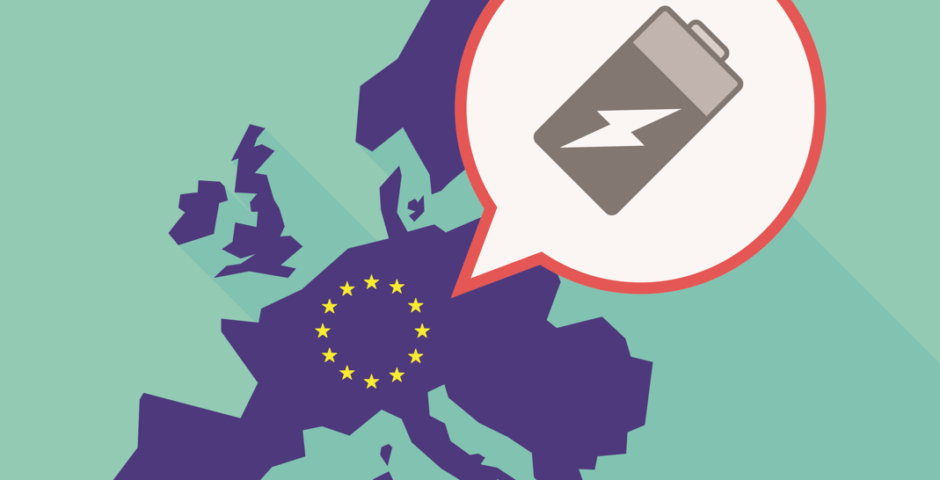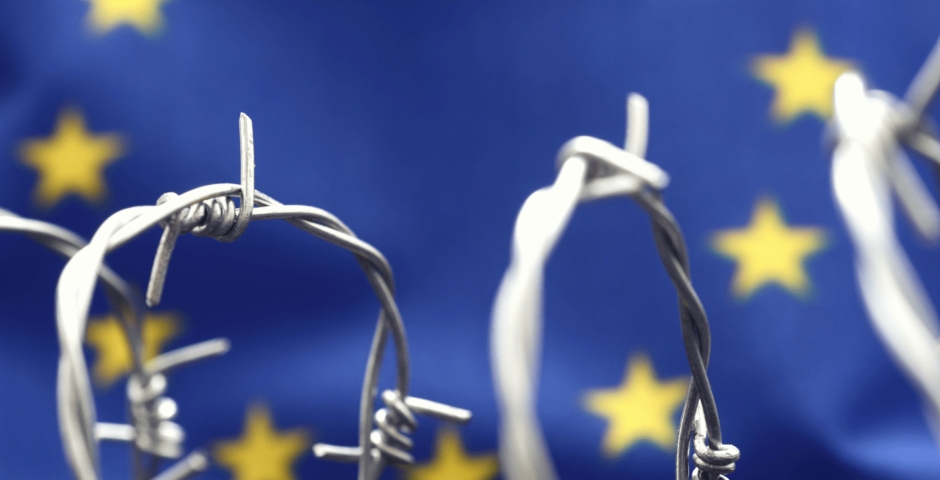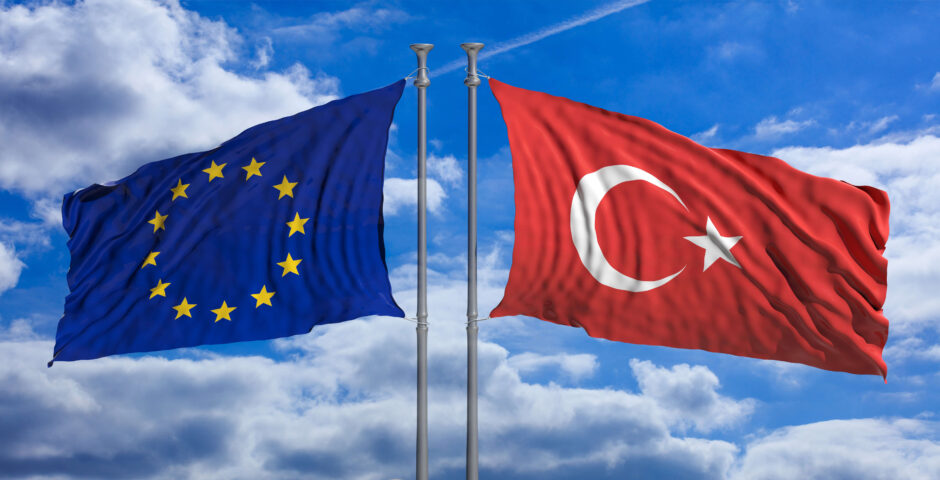Europe’s future is circular, but what does that mean?

A crash course in circular economy.
‘There is only one planet Earth, yet by 2050, the world will be consuming as if there were three’
This is how the European Commission begins its Circular Economy Action Plan, which was published in March 2020. This statement is not unfounded. Research by the OECD, a group of mostly rich countries, has shown that, if no action is taken, global consumption of fossil fuels will double over the next 40 years and annual waste production will increase by 70% compared to today’s numbers. Such a situation is not sustainable and will certainly have disastrous effects on our climate. The introduction of a circular economy is seen by the EU as the key to prevent such a scenario from becoming reality and to achieve the climate goals as set by the Green Deal.
It is not only the EU that is embracing a circular economy as an answer to the climate crisis. National governments, companies, and scientists have also taken an interest in the subject in recent years, which has led to a huge boost in the popularity of circular thinking. I am one of the people who jumped on this hype train by writing my master’s thesis on the subject, and I was certainly not the only one. I had the greatest difficulty in finding people to interview because experts are overwhelmed with interview requests from students, journalists and other parties interested in the topic.
This attention does not mean that circular economy has become a household subject nor do European citizens know what its introduction will mean for them. This is because circular economy is a difficult term to understand for many reasons. So I hereby treat you to a crash course in circular economy: What is it exactly? Why are we doing it? And most importantly: what will it mean for us as Europeans? This article is the first of two parts about the EU and circular economy, with this part focussing on what circular economy entails.
What are we talking about?
Let’s start at the beginning. There is no all-encompassing definition of what circular economy entails. This is because circular economy is not a theory in itself, but rather a hotchpotch of different theories from different research fields that have developed over the past century. Because of that, most articles on circular economy published in academia focus on unravelling what exactly circular economy is and how best to describe the concept. A study conducted in 2017 under the direction of Julian Kirchherr found no fewer than 114 different descriptions of the concept in academic publications. Despite this, there is one description that is used most often and that is the one coined by the Ellen MacArthur Foundation, a think tank set up specifically for the purpose of promoting a circular economy. They describe circular economy as:
‘An industrial system that is restorative or regenerative by intention and design. It replaces the end-of-life concept with restoration, shifts towards the use of renewable energy, eliminates the use of toxic chemicals, which impair reuse and return to the biosphere, and aims for the elimination of waste through the superior design of materials, products, systems and business models.’
This description summarises the core values of circularity well, but to really understand what a circular economy is about, it is useful to talk more in depth about what circular thinking tries to accomplish.
From a linear to a circular economy
Generally speaking, a circular economy is an alternative economic model that is intended to replace our current model, which we have been using since the Industrial Revolution. From the 1870s, when Western Europe rapidly industrialised, an economic system called ‘linear economy’ emerged. Within a linear economy you start out with certain natural resources or materials. These materials are converted into products in factories. Then these products are sold to consumers and when these consumers are finished with the product, it is thrown away and ends up in a landfill.
The name linear economy is based on the life cycle of a product: it is a line with a beginning and an end. In English, this system is also called the ‘take-make-dispose’ model. We take something, we make something else out of it and when we are done using it, we throw it away. This system becomes problematic when you realise that most of the materials and resources used for this purpose are scarce. We do not have an infinite supply of natural resources, but we do use them to make products that are eventually thrown away and not reused. We will eventually run out of the resources we use for production, and the big pile of waste at the end of the product’s life cycle is growing bigger on a daily basis. You don’t need to be an expert to realise that such a system simply does not work in the long term. The circular economy tries to break this process by, as the name suggests, organising the economic system into cycles.

Source: AkzoNobel, 2015 (The Circular economy – AkzoNobel Report 2015)
Within a circular economy, the ‘take-make-dispose’ model of the linear economy is replaced with the so-called ‘reduce-reuse-recycle’ model: reduce the use of your resources and materials and, when you do use them, make sure that the materials can be reused. This reuse is done through two different types of cycles: biological and technical cycles.
The biological cycle uses materials that are biodegradable and can be safely returned to nature without causing damage to living systems after human use. A good example of this is food waste, but also products made from natural materials such as cotton and wood. The technical cycle consists of products and materials that have the potential to be continuously reused. An example of this is a car that is completely stripped at the end of its life and whose parts find a new destination piece by piece. When products consist of both biological and technical materials, it is important that these two can be easily separated after use. This way, you create a self-sustaining industrial system. Waste therefore does not actually exist within a circular economy: residual materials should be used as ‘food’ to saturate the system.
From recycling to upcycling
The ultimate goal of a circular economy is to reduce the existence of waste as much as possible and ideally to get rid of waste altogether. This goal has no noble foundation, but has to do with efficiency. The moment you have to deal with waste in a circular economy, it means that you have not taken the fullest potential out of your used materials and are thus suppressing the productivity of your economic system.
It is not enough to recycle your waste to prevent it from being created. Why this is true was explained well by William McDonough and Michael Braungart in their 2002 book Cradle to Cradle: Remaking the Way We Make Things. Suppose you have a number of plastic bottles that you want to reuse. After thinking long and hard, you finally decide to reuse the plastic and turn it into a rug. Now you have enjoyed your recycled carpet for a while, but after a few years you decide that it no longer fits nicely into your interior. What are you going to do with your carpet now? The plastic has been reused to such an extent that it can no longer be taken apart and the rug ends up in a landfill because you can’t do anything else with it.
This is not recycling according to McDonough and Braungart; you have simply extended the route to the landfill of the plastic bottles by one stop. The mistake made here is that when the plastic bottles were made, no thought was given to what should happen to them once they had fulfilled their purpose. The bottles were then used inefficiently to make something else and in such a way that they could not be reused afterwards. This is not recycling within a circular economy, but downcycling. You have used the material in such a way that it has become less efficient. Therefore, recycling waste according to circular principles is not enough. In a circular economy, circular thinking needs to be applied at every point of a product’s life cycle. As early as the design phase, a designer must consider how the product he or she has conceived can be reused. As a guideline, the so-called ‘nine principles of circular economy’, also known as the nine Rs, have been devised for this purpose and are explained in the graph below.

Source: Kirchherr, J., Reike, D., Hekkert, M., (2017) ‘Conceptualizing the circular economy: An analysis of 114 definitions’ Resources, Conservation & Recycling 127 pp. 221 – 232.
More responsibility
As of now, consumers are responsible for the reuse of products and materials. Waste must be separated and electrical appliances returned to special collection points. But this is actually a rather strange situation, as consumers do not have the means to reuse materials as efficiently as possible. The only thing they can do is hand in products for recycling, which in most cases means downcycling.
In a circular economy, manufacturers and sellers therefore remain responsible for their products. Suppose you buy a washing machine that breaks down after five years of use. Right now that would mean a trip to the closest landfill and a store to replace it. In a circular economy, ideally the manufacturer would remain responsible for the washing machine. They would come and pick it up to repair it, and when that is not possible, you have the option to disassemble the washing machine and use the parts for something new. The main reason for doing this is because the manufacturer has the knowledge to keep the washing machine (or its parts) in the cycle as efficiently as possible; the consumer does not.
Because the manufacturer remains responsible for a product, lease contracts are also a popular alternative in a circular economy. A good example of such a system is the Dutch company Swapfiets. At Swapfiets you can rent a bicycle for a fixed price per month. When something happens to the bicycle, Swapfiets comes to pick it up and the user gets a new one. Then they repair the bike and make it ready for another customer. This system works well, because Swapfiets has the expertise to repair the bicycle as well as possible. Which in the bigger picture means that ultimately fewer bikes are needed for the same group of people.
This system sounds easy and logical when it comes to products such as washing machines and bicycles, but it quickly becomes complicated when you start applying it to products that are, as one would say, fashionable. As a producer, you can ensure that your product remains in the cycle as long as possible, but the moment trends change, consumers want something else. This means that a great deal of responsibility also lies with the consumers themselves.
We have become accustomed to changing items like clothes and phones every so often to keep up with the times. This leads to endless consumption when, in essence, there is no real need to. The most telling example of this is fast-fashion brands that completely renew their catalogue every six weeks. You can blame the producers for this, and that is partially fair, but part of the blame can also be attributed to consumers who enjoy shopping and want to see something new every single time. Circular economy therefore means that people’s mentality has to change. It means that both consumers and producers have to challenge their current view of materialism. Because when people consume less, it automatically means that fewer raw materials are needed to meet demand.
Sustainable development and true pricing
Consuming less is a fine idea, especially for the self-proclaimed minimalists in our society. But in our current system, less consumption means less turnover, and less turnover means less Gross National Product (GNP), so the economy would shrink and this is something you want to avoid. So what are the benefits of a circular economic system then?
This has to do with the main principle of circular economy, where all the above mentioned points come together. Circular economy aims to decouple economic growth from the use of natural resources. In our linear economy, materials have value. For example, when you buy a banana in the supermarket, there is a profit margin on that product and that is the leading factor in our current economic system: make sure your profit margin is as high as possible, because then you are doing well. The fact that, for example, child labour was needed to get the bananas from the plantation to the supermarket plays no role in this story: the economic value is in the product and nothing else.
Circular economy, on the other hand, places enormous value on something called ‘true pricing’. True pricing describes the phenomenon in which you include all costs incurred to create a product. This goes far beyond material or personnel costs, for example. If you make a product that causes CO2 emissions or environmental pollution, then in our current system the costs are borne by society. Think, for example, of the emissions from a coal mine: the people living in the immediate vicinity pay the price in the form of more health complaints and, in the longer term, this means higher health care costs that are paid for by taxes. The negative environmental and health effects of the creation of a product are not paid for by the maker or user of the product, but within true pricing systems they are. The damage caused by production is converted into a cost or margin that is included in the selling price.
Within our current system, producers who cut corners, for example by treating employees badly or using polluting production methods, are rewarded in the form of higher profits, since they have fewer costs. But within a true pricing system, all positive and negative effects of a product are taken into account, which ultimately leads to very different prices. Standard chicken meat is cheaper than biological alternatives because production costs are lower, but if the negative costs of animal suffering and the emission of ammonia during production are included, this meat may suddenly turn out to be much more expensive than its biological counterpart.
People often choose the cheapest option, so in true pricing systems producers with the best environmental and social impact are the ones being rewarded instead of the other way round. And ultimately, this is also the most efficient way of organising your economy, because society does not have to pay the bill for the negative effects of production and are instead put on the producer and consumer. This is also a financial incentive to redesign your production process. In other words, the entire process of how a product is created is included in the selling price, instead of only the value of the raw material or the material used, as is currently the case.
This is also increasingly being applied on a macro-economic scale. In the past, the economic position of countries was only determined by one factor: GDP (Gross Domestic Product). How prosperous a person is within a country was thus determined on the basis of how much money was involved in an economy divided by the number of inhabitants. This is not a realistic reflection of reality. Based on the GDP, the Netherlands is a prosperous country, but if you look at a factor such as healthcare, the figures are suddenly very different. According to the OECD, mental health care in the Netherlands is alarmingly poor, while good mental health is very important for a person’s happiness and well-being.

Source: Greenport West-Holland, 2021 (The Sustainable Development Goals as a roadmap to plant production – Greenport (greenportwestholland.nl))
Monetary wealth is thus not the only indication of how well a nation is doing. To reflect this, the United Nations introduced the Sustainable Development Goals back in 2015. These seventeen goals function as a road map for the international community that should help in guiding the transition towards a more sustainable society where economic, social and ecological needs are well balanced.
The European Union therefore wants to fully commit to the introduction of a circular economy with the ultimate goal of becoming completely circular by 2050. My next article explains how the EU plans to achieve this.
Linda den Bol graduated in history at Radboud University and obtained a dual-degree master’s degree in European Governance from Masarykova Univerzita and Utrecht University.
Image: Shutterstock




